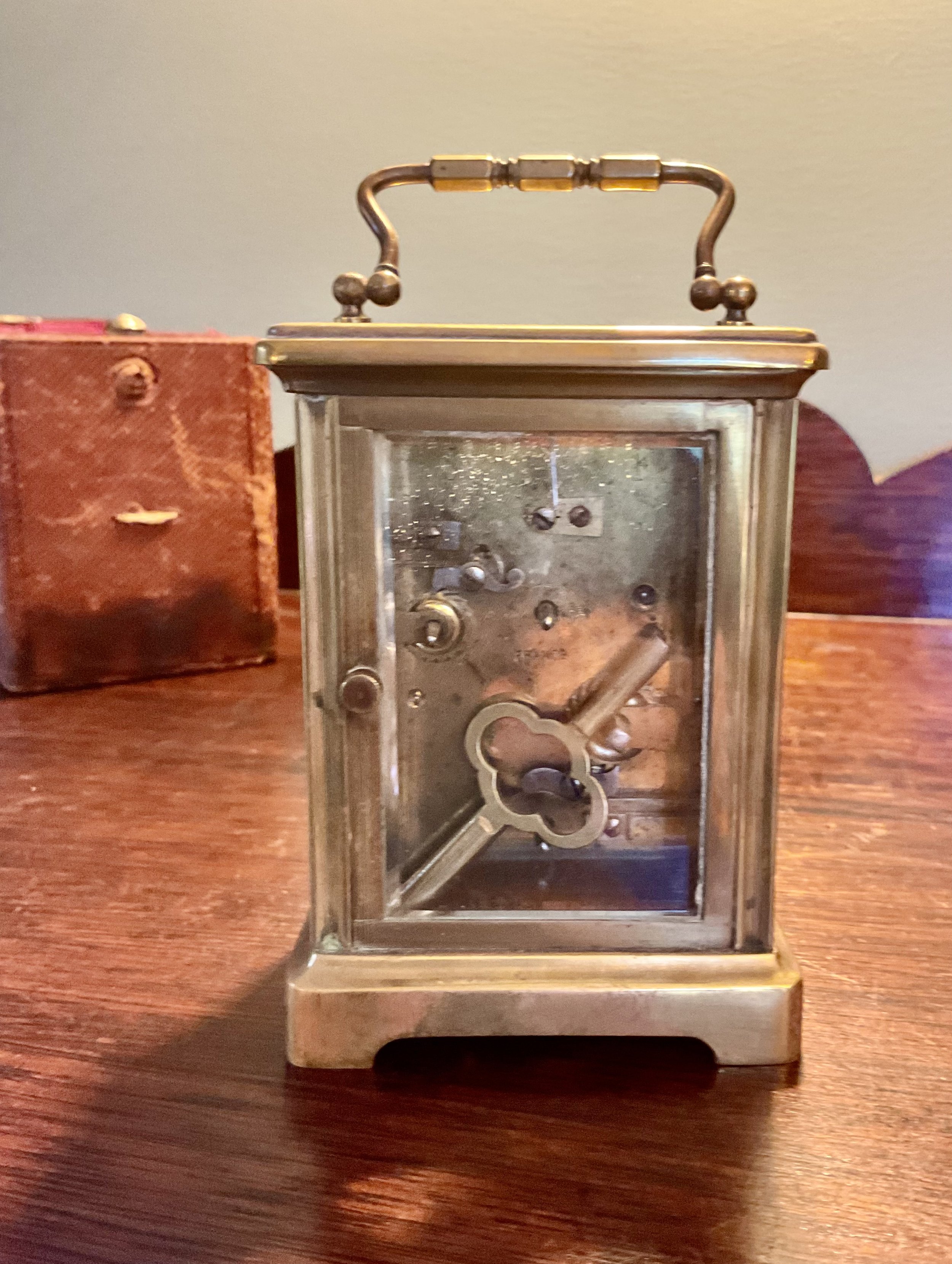 Image 1 of 7
Image 1 of 7

 Image 2 of 7
Image 2 of 7

 Image 3 of 7
Image 3 of 7

 Image 4 of 7
Image 4 of 7

 Image 5 of 7
Image 5 of 7

 Image 6 of 7
Image 6 of 7

 Image 7 of 7
Image 7 of 7








Vintage French Vitreous Enamel House Number
This original vintage French house number is made from vitreous enamel. Displaying the number 158, it is coloured white on an iconic blue background.
Vitreous enamel is also referred to as porcelain enamel. It is made by fusing powdered glass onto a base by firing. The powdered glass melts and hardens to a smooth, durable surface. The word ‘vitreous’ comes from the Latin word for ‘glassy’. Limoges enamel, made in Limoges France, was the most famous centre of vitreous enamel production in Western Europe.
The designs for enamel signs were hand drawn and then converted into stencils, enabling the design to be transferred onto the metal plate, using layers of enamel powder to be fused with the metal during firing. From the mid-1800s the blue colour was widely used across Europe for house numbers and street signs. The blue colour was the only colour available for mass production other than black and white.
Numbering, that is the ‘odd/even’ system of house numbering – the even numbers proceeding on one side of the street and the odd numbers on the other side, is sometimes called the ‘French system’ because it was introduced in Paris in 1805. For many years, the numbering of buildings had become a contentious issue in France. In 1805, Napolean 1 announced that, henceforth, it would be compulsory to number Parisien buildings. The system introduced was based on the way streets were aligned with the river Seine. Streets parallel to the river were in red on an ochre background and streets perpendicular to the river were black on an ochre background. Even numbers were always on the right-hand side and odd numbers on the left. This system quickly became common in the larger cities in France.
Not your number? This striking sign could be used as a quirky feature in the garden. Likewise, it could be used as a stunning piece of decor inside the house, perhaps in the kitchen or games room. It is in overall very good condition. There is some age related staining. It measures 28 cms by 17 cms.
This original vintage French house number is made from vitreous enamel. Displaying the number 158, it is coloured white on an iconic blue background.
Vitreous enamel is also referred to as porcelain enamel. It is made by fusing powdered glass onto a base by firing. The powdered glass melts and hardens to a smooth, durable surface. The word ‘vitreous’ comes from the Latin word for ‘glassy’. Limoges enamel, made in Limoges France, was the most famous centre of vitreous enamel production in Western Europe.
The designs for enamel signs were hand drawn and then converted into stencils, enabling the design to be transferred onto the metal plate, using layers of enamel powder to be fused with the metal during firing. From the mid-1800s the blue colour was widely used across Europe for house numbers and street signs. The blue colour was the only colour available for mass production other than black and white.
Numbering, that is the ‘odd/even’ system of house numbering – the even numbers proceeding on one side of the street and the odd numbers on the other side, is sometimes called the ‘French system’ because it was introduced in Paris in 1805. For many years, the numbering of buildings had become a contentious issue in France. In 1805, Napolean 1 announced that, henceforth, it would be compulsory to number Parisien buildings. The system introduced was based on the way streets were aligned with the river Seine. Streets parallel to the river were in red on an ochre background and streets perpendicular to the river were black on an ochre background. Even numbers were always on the right-hand side and odd numbers on the left. This system quickly became common in the larger cities in France.
Not your number? This striking sign could be used as a quirky feature in the garden. Likewise, it could be used as a stunning piece of decor inside the house, perhaps in the kitchen or games room. It is in overall very good condition. There is some age related staining. It measures 28 cms by 17 cms.































